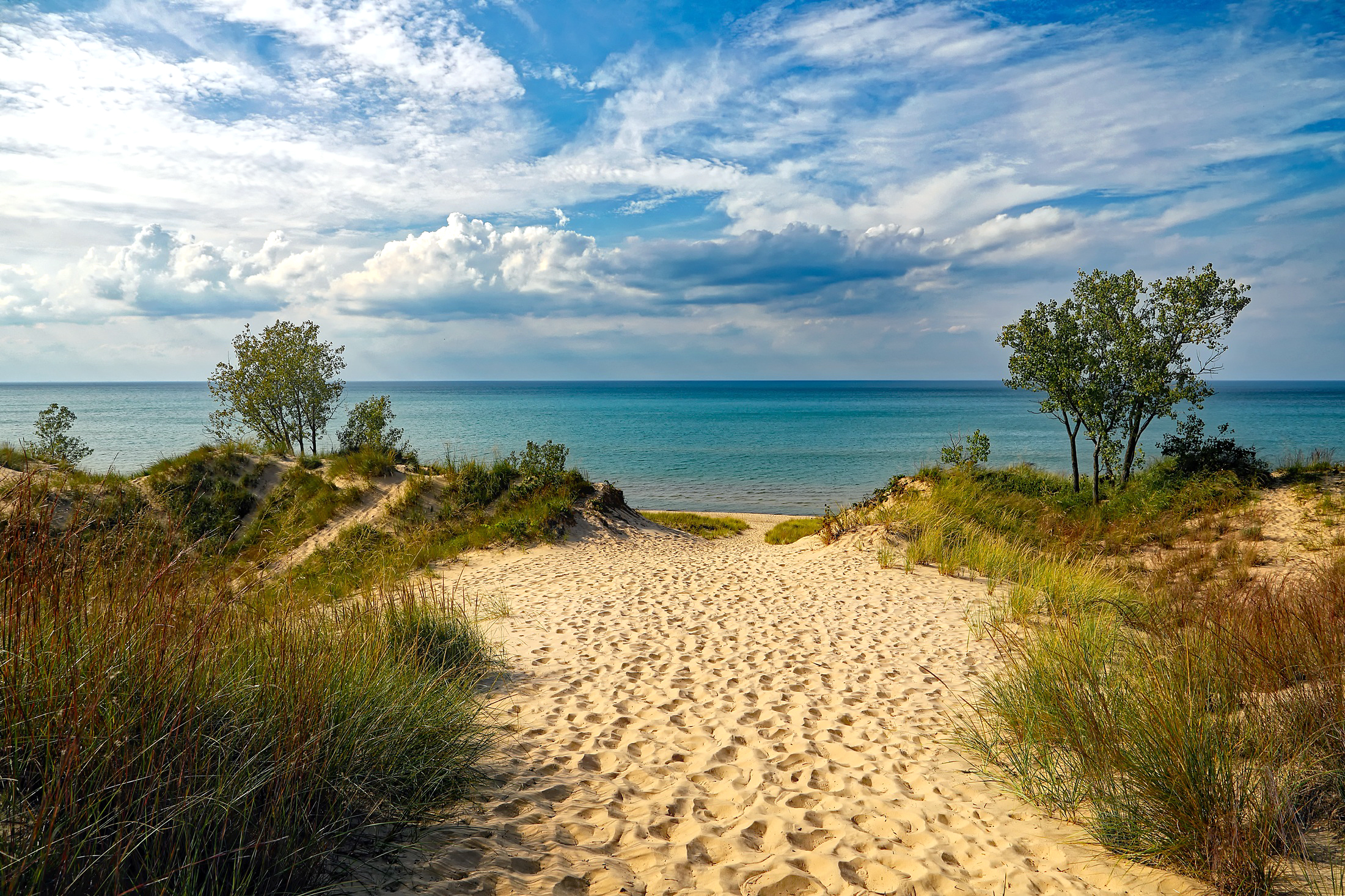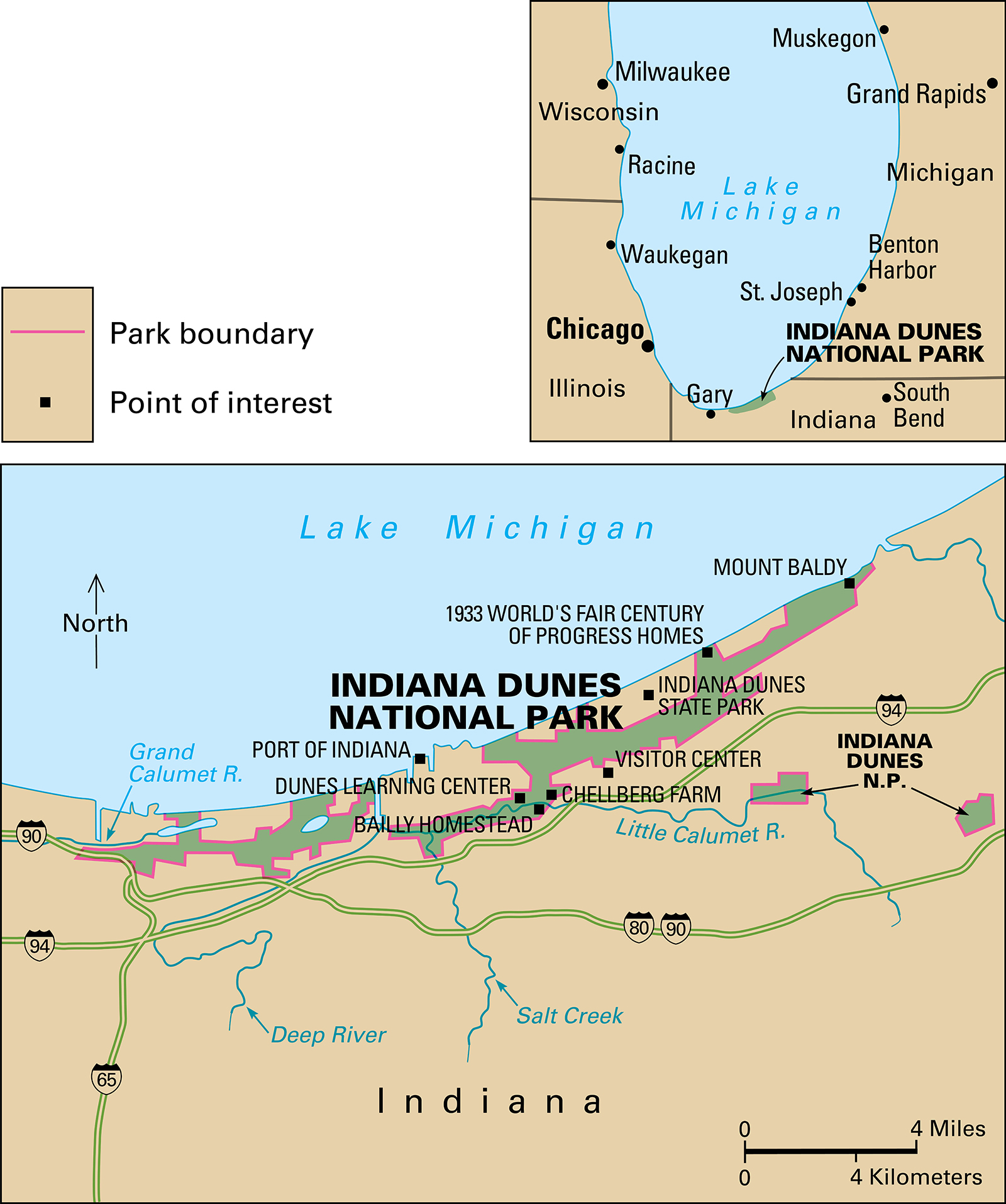Indiana Dunes National Park, in northwestern Indiana , is a protected area of beaches , dunes , and other terrain along the southern shore of Lake Michigan . The park also includes oak savannas, swamps, bogs, marshes, prairies, rivers, and forests. Most of the park lies along a 15-mile (24-kilometer) strip of beaches.

More than 1,100 species of flowering plants and ferns live in the park. The diversity of habitats is also home to hundreds of animal species. The park houses an important great blue heron rookery (breeding ground). It is also home to many coyotes and white-tailed deer .

Lake Michigan formed more than 14,000 years ago as a giant glacier began to melt. The meltwaters advanced and retreated many times, sculpting the complex landscape of beaches, sand dunes, and wetlands preserved at the park. The oldest dunes are farthest from the lake and are now covered by oak forests. The younger dunes are nearer the shore and beaches. The area is of unique interest to geologists who study the formation and development of freshwater shorelines.
In 1966, the U.S. Congress authorized the protection of the area, establishing the Indiana Dunes National Lakeshore. It was designated a national park in 2019.
